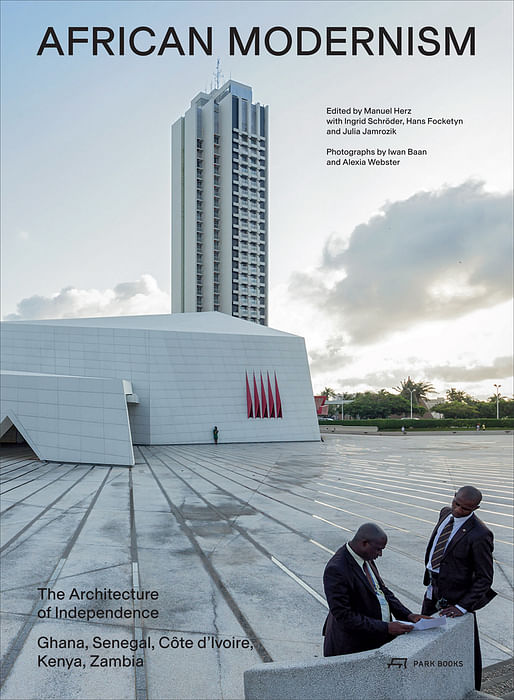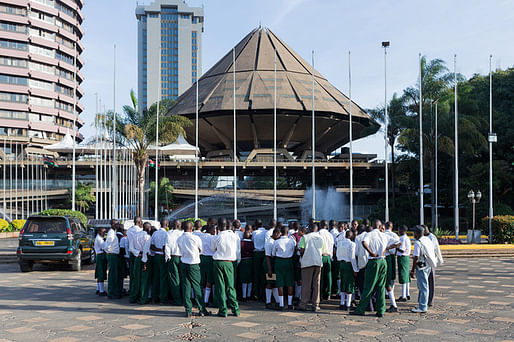

Several African countries gained hard-fought independence from their colonizers during the 1950s and 1960s, and one way the countries expressed their new national identities was through architecture. The book African Modernism delves into this relationship between architecture and the complexities of nation building, particularly in Ghana, Senegal, Côte d'Ivoire, Kenya, and Zambia.

Edited by architect Manuel Herz and published to accompany the Vitra Design Museum's "Architecture of Independence" exhibition, the hefty 640-page book features 103 buildings with brief description texts, images, site plans, floor plans, and sections, as well as significant photo contributions from Iwan Baan and Alexia Webster — who each documented the buildings in their current state. The book also features essays that focus on different aspects and topics regarding post-colonial Africa, which are illustrated with images and documents. If you're in Chicago, the Architecture of Independence exhibition will be at the Graham Foundation starting January 29.
Thanks to publisher Park Books, Archinect is giving away three copies of African Modernism to our readers!
Read on for more about African Modernism from the book's editor Manuel Herz, and how to enter the giveaway.

ARCHINECT: Summarize the themes and issues that African Modernism addresses.
MANUEL HERZ: As indicated by the title, the book deals with modernism and the question of independence, or nation building. One of its key theses is the notion that we can understand the architecture that was built during the 1960s and ’70s as a way to unravel the complexities of the independence process that countries like Ghana, Senegal, Côte d’Ivoire, Kenya and Zambia were going through. Apart from that, the book aims at documenting this oeuvre of architecture and bringing it into a general consciousness and discourse.


ARCHINECT: The book focuses on projects in Ghana, Senegal, Côte d'Ivoire, Kenya, and Zambia. Can you expand more on why these particular countries were selected?
MH: The five countries span the continent geographically, from Senegal in the very West, to Kenya at its Eastern coast and Zambia in the southern region. They represent the two major colonial powers, France and Great Britain, and the countries’ independence dates mark the ‘hottest’ period of decolonization, with Ghana becoming independent as the first Sub-Saharan country in 1957, Senegal and Côte d’Ivoire in 1960, Kenya in 1963 and Zambia in 1964. The authors and editors are aware of the fact that, by foregoing countries like Nigeria, Tanzania or the DRC, substantial gaps exist in this volume, but they see the book as a step towards inspiring similar research on some of these gaps by other authors.

ARCHINECT: What do you hope readers can learn about African modernist architecture from this book?
MH: I hope readers will be amazed to discover a whole new dimension of late modernist architecture and cultural production and come away with an understanding of both the relationship between architecture and political processes and of the African continent, which unfortunately remains misunderstood and too often seen in terms of plight or deficiencies.
TO ENTER THE GIVEAWAY: Simply fill out this survey by the deadline on Sunday, January 10, end of day. Three winners will be selected. Good luck!
No Comments
Block this user
Are you sure you want to block this user and hide all related comments throughout the site?
Archinect
This is your first comment on Archinect. Your comment will be visible once approved.